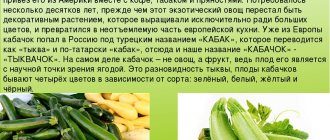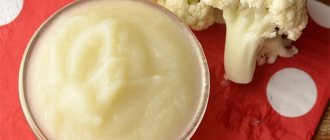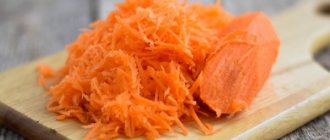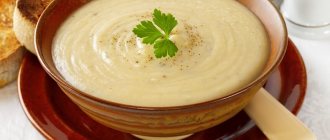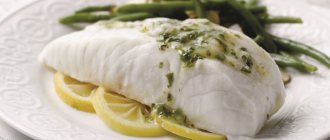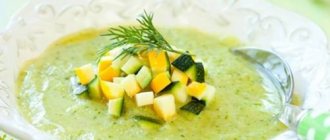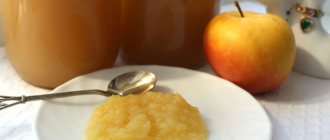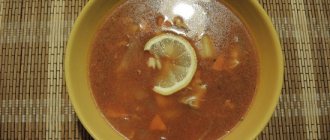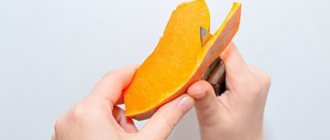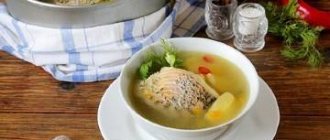Now you will learn how to cook zucchini so that they turn out delicious.
Usually zucchini is fried and baked, but in rare cases (for example, when eating on a diet), you need to understand how much to cook them. Whole zucchini is boiled for 15-20 minutes, previously peeled and seeds removed. Finely chopped zucchini is cooked for 10 minutes.
Cook the zucchini in a double boiler for 20 minutes.
In a multicooker, cook 0.5 kg of zucchini for 10 minutes on the “Baking” mode.
How to cook zucchini
Ingredients
- zucchini
- water
How to cook
- Rinse medium-sized zucchini thoroughly under cold water and remove the skin if it is hard using a vegetable peeler.
- Cut the fruit into circles 1.5 centimeters wide, if necessary (if the seeds are hard), remove the seeds with pulp from the core.
- Cut the fruit lengthwise and remove the grains from the core, and then cut into cubes or sticks, depending on further use.
- Fill the pan with cold water to half the volume, add a little salt and boil.
- Place the prepared zucchini in boiling water and cook for 10 minutes.
Content of vitamins and minerals
Many adults consider zucchini to be completely useless in terms of nutritional value. However, this product is recommended to anyone for organizing dietary nutrition.
Comparing zucchini with regular pumpkin, one can note their low sugar content. But this disadvantage is completely offset by the saturation of mineral salts, which play a decisive role in the metabolic processes of the body.
Zucchini pulp is rich in vitamin C. The product is a valuable source of iron, copper, and other elements that are involved in restoring blood composition.
Eating boiled zucchini in the form of puree becomes indispensable for children in the first years of life. Many children suffer from physiological anemia, which is helped not so much by taking vitamin complexes as by additional dietary nutrition.
Zucchini puree recipe for babies
Composition and nutritional value of zucchini
- Zucchini contains many useful microelements, namely:
- Vitamin complex (A, C, group B, E, PP);
- Calcium;
- Magnesium;
- Iron;
- Potassium;
- Pectin;
- Natural sugar;
- Cellulose.
Zucchini is usually introduced first in the form of complementary foods. The baby becomes familiar with this food after milk or formula. The baby's first teeth have not yet come out; he does not realize that food needs to be chewed. That is why, to prevent your baby from choking, you need to puree the zucchini. For the first complementary feeding, any product should be ground to a homogeneous puree.
How long to cook zucchini for puree
Zucchini can be eaten in any form: its peel, seeds, pulp, even raw, can be eaten by adults. The child must first boil the vegetable, since the raw vegetable is too hard and can harm the tummy. The first question that a young mother will face is how long to cook zucchini for complementary feeding?
The structure of the vegetable is not particularly dense. It is soft in itself, very watery. Therefore, it does not require long boiling, like pumpkin, for example. To cook the zucchini, just hold the pieces in boiling water for 10 minutes.
Thermal treatment can be any type, as long as it does not require cooking in oil and does not dry out the zucchini. That is, you can cook zucchini for the first feeding either in a saucepan or in a slow cooker. You can also steam it in a double boiler. In any case, it will take about 10 minutes of cooking.
Features of choosing ingredients
Zucchini grown in your own garden is best suited for making puree. If this is not possible, you can buy these vegetables in season at the market or in a store. The main thing is to know in what place and conditions they were grown.
The vegetable for puree should be as young as possible, with delicate, very soft skin. The seeds have not yet formed inside this zucchini. Its pulp is an ideal basis for preparing first courses for children. You can also use young zucchini to cook delicious pureed soups, bake casseroles and stew for the whole family.
Bon appetit!
First feeding puree recipe
Preparing zucchini puree for a child is very simple, especially if you use a blender. However, even if the housewife does not have such a gadget in her arsenal, you can get by with an ordinary pusher. To ensure that no problems arise, the recipe for making zucchini puree for the first feeding is described in this article step by step. The hostess will simply have to comply with it. So let's get started!
To start cooking, you need to prepare the zucchini. Zucchini, like any other product, is introduced into the diet gradually: starting with one spoon and increasing to a 100-200 gram portion. In this case, the puree cannot be stored for more than 24 hours. Therefore, for cooking you will need only 20 to 200 grams of vegetables, depending on the stage of complementary feeding, no more.
How to prepare zucchini puree for a child
- The zucchini needs to be washed, cleared of seeds and tail. Moreover, the smallest seeds do not need to be removed if the zucchini is mashed with a blender. If you only have a crusher, you need to remove all the seeds. The peel does not need to be peeled.
- The zucchini needs to be chopped and cut into round pieces (not very thin, about 1 cm thick).
- Pour some water into a small saucepan or saucepan. Immerse the vegetable pieces in it.
- There is no need to add salt to the water - it is contraindicated for children.
- If cooking in a slow cooker or double boiler, then add as much water as required by the instruction manual.
- After heat treatment, the zucchini can be transferred to a clean container and pureed using a blender or masher.
- At the very end of preparing zucchini puree for babies, do not forget to add a little olive oil, which is added to the vegetable mass.
- For the first servings, 1 teaspoon will be enough. Per serving up to 50 g. pour in 0.5 tsp by weight. oils, from 50 to 100 gr. – 1 tsp. After these steps, the puree will only need to cool a little. Now you can feed homemade zucchini puree to your baby.
Zucchini for first feeding - how to give it correctly
At how many months can you feed your baby zucchini? It depends on the child’s type of nutrition, his well-being and state of health.
Basic rules for introducing complementary foods:
- A bottle-fed baby can try zucchini after four months; a breast-fed baby “gets acquainted” with vegetable complementary foods after six months.
- The first time complementary feeding is given in the first half of the day, after which the mother needs to carefully monitor the baby’s well-being.
- To begin with, the child can be given no more than a teaspoon of the product to try; if tolerated, the portions are gradually increased.
- The dish must be warm and freshly prepared.
- First, vegetables should be given to the baby in their pure form, without adding salt or sugar.
- After complementary feeding, the baby can be given a small amount of breast milk or formula.
- If a child is about to be vaccinated or feels unwell, it should be avoided for a while.
- How often can you give it to your baby? It is very important to remember the variety of flavors in the children's menu. If the child likes the taste of the product, he can be fed this complementary food every other day and be sure to alternate it with other vegetables.
Complementary feeding for a child from 4 months [Supermoms]
If a child categorically refuses a boiled product, he cannot be persuaded or forced. Maybe he doesn't feel well or he just doesn't like the taste of the vegetable. In this case, it is better to add other, equally healthy vegetables to your diet - broccoli, cauliflower.
Zucchini puree in baby food has its own age standards. A 6-month-old child can consume up to 100 g of vegetable product; at 7-8 months, the portion increases to 150 g. A 1-year-old baby can be given 200 g of zucchini dish.
How to cook zucchini for a child in a saucepan
Zucchini is best suited for first feeding because it easily breaks down in the stomach and intestines without injuring them, and also because it is low allergenic. It is one of the “starting five” vegetables recommended for children by WHO.
- Place the zucchini pieces in a saucepan and fill with purified or special baby water so that they are covered to the height of two fingers.
- Cook the zucchini for 10-15 minutes until completely softened. At the end of cooking, do not drain the broth.
- Rub the boiled pieces of zucchini through a sieve or grind in a blender. If the puree is too thick, dilute the mixture with broth.
What are the benefits of zucchini for children and adults?
Using vegetables for the first feeding is the safest way to introduce your baby to regular food.
Of course, such puree cannot be compared in taste and nutritional value to mother’s milk, but it contributes to the correct restructuring of the digestive system to meet the needs of an already stronger child. Mothers know how healthy zucchini is; the only question is how to prepare it correctly so that the child likes the dish and retains all the useful elements.
To make the zucchini delicacy desirable and healthy for babies, it is better to prepare it yourself. Mashed potatoes for the first feeding can be prepared using types of heat treatment such as baking, using a double boiler, or simply boiling the zucchini in water. The vegetables will become soft within 10-15 minutes, then they need to be thoroughly chopped so that the fibers turn into porridge.
You should not store zucchini puree for babies; you need to prepare it fresh every day. It’s better to buy a couple of vegetables, cook porridge from half of one, and freeze the rest for future use.
An infant who feeds on mother's milk does not feel the need for additional complementary feeding until 6 months. Six months after birth, the baby will need to cook soups and prepare vegetable purees, since the baby’s body will no longer have enough mother’s milk. During this period, according to many pediatricians, the best first complementary food is zucchini, pureed.
Of course, you can buy your child ready-made purees in the store. But not every baby will want to eat such a dish, and mothers do not know what raw materials baby food manufacturers use to prepare zucchini complementary foods. Therefore, the best option is to cook the puree yourself. But how long should you cook the first course of zucchini for a baby so that the beneficial elements are retained in full in the dish?
Read here when to introduce meat into complementary foods for your baby.
We already know how long to cook zucchini, but we’ll figure it out further how to cook it so that the child likes it. So, we have already talked about the benefits of zucchini. Another advantage of this vegetable is that after cooking it does not need to be salted or added sugar - zucchini complementary food has its own natural sweetish taste.
The first zucchini dish for babies should be made as a one-component dish. If the baby refuses such food, it is allowed to add mother's milk to the dish. To maximize the benefits of the vegetable, it is better to steam it. How long will this process take? Usually - about 10-15 minutes: if the zucchini can be easily mashed, then it is ready.
So, when preparing zucchini complementary foods, you should adhere to the following rules:
- Wash the vegetable thoroughly, remove the peel and remove the seeds if they are large.
- Wash the saucepan first and pour boiling water over it.
- The vegetable is placed in boiling water so that it covers it completely.
- Do not overcook the zucchini to retain the nutrients.
- Grind the cooked vegetable into a smooth puree.
Many mothers do not know how long to cook zucchini, so they cook it for about 20 minutes, believing that this will be better for the baby. However, in this case, the baby will not receive the entire set of nutrients contained in the vegetable. Sometimes 10 minutes is enough for the zucchini pieces to become soft. You can crush them with a blender, or you can crush them with a fork or in a mortar. You can add a drop of olive oil to the finished puree - this will make the taste of complementary foods even healthier and richer.
How long to cook zucchini for baby puree? This requires 6-10 minutes. It is important to preserve vitamin C after processing, and for this purpose the fruit is placed in water that is already boiling. The young zucchini is cooked until it is completely hidden in the pan under water. This usually happens quickly. You can also not cook, but simply steam the dish. Both taste and benefits will be preserved.
Such a finished product has a complex of properties that are important for the body:
- Antiallergic
- Antianemic
- Diuretic
- General strengthening
- Increased intestinal motility
Cooking is important for infants, since zucchini is easily digestible, normalizes water-salt metabolism and carries out natural blood purification.
Recipe for zucchini puree for complementary feeding
The introduction of zucchini in the first complementary feeding is recommended by WHO, and zucchini puree for complementary feeding of the baby can be prepared independently without any problems. There is nothing difficult in growing zucchini and the ripe fruits of many varieties can be stored throughout the frosty period. The pulp of the fruit with elementary heat treatment retains its beneficial properties and is easily absorbed by the child’s body even from an early age.
Content
If you decide to start introducing solid foods to your baby, start with zucchini. This will be the best addition to breast milk or adapted formula. Zucchini is a hypoallergenic product and contains a large amount of useful substances that a child needs.
We prepare zucchini puree for the first feeding at home. The only ingredients you need are zucchini and water. Let's start by rinsing the zucchini under cool running water. Peel and cut into cubes. Then there are 2 options. Either put it in boiling water and cook the zucchini for 6-10 minutes, while preserving the benefits of vitamin C. Or steam it, which will undoubtedly be tastier and healthier. Next, rub through a sieve or grind with a blender.
You need to start complementary feeding with one teaspoon, gradually day by day, increasing the number of spoons. It is important to introduce your child to this product at a very young age. When a child grows up, he will still need nutrients. And you can pamper him with many different zucchini dishes.
For the first feeding, it is recommended to cook the zucchini for up to 10 minutes. Usually this time is enough to soften the cut pieces. Do not forget that the longer the heat treatment of a vegetable occurs, the less vitamins and beneficial microelements remain. Then everything is thoroughly crushed into puree and the first complementary food is ready.
To prepare the puree, the baby needs to select only young and fresh zucchini fruits: without rot, cracks or dents. The fruit is thoroughly washed under running water. Then its side parts are cut off: the tail and the “butt”; the peel is removed. The zucchini is cut lengthwise into several pieces, from which the central soft part with seeds is removed.
How to freeze and defrost zucchini? Cooked, chopped fruit cubes in the required quantity are placed in plastic bags or containers and then in the refrigerator. To prepare puree from frozen fruits, it is recommended to use defrosted vegetables. To speed up the process, bags or containers with zucchini are placed in water at room temperature or under running tap water. After 1-2 hours, you can start cooking according to the known scheme.
Due to its unique properties, zucchini is widely used in baby food. In addition, vegetable zucchini purees are considered the most popular when introducing the first complementary foods to a child. Manufacturers recommend using one-component zucchini puree for children from 4 months.
Baby food products recommended for first complementary feeding include Heinz zucchini puree, which additionally contains corn flour and water. A similar product is Hipp zucchini puree, which contains coarse rice flour. These products are sold in glass jars with a net weight of 80 grams, and the puree contains no salt, sugar, starch, preservatives or dyes.
It is recommended to try Tema beef and zucchini baby puree no earlier than 6 months from birth.
Zucchini has a very pleasant taste. Doctors advise using them for those who have undergone surgery on the stomach or intestines. I would like to mention that these fruits are very useful for those who suffer from edema.
We invite you to familiarize yourself with the drawing of a children's swing
Zucchini juice for men and women can help with obesity. Helps the body get rid of toxins and waste, relieves constipation well, strengthens the heart. The glycogen they contain has a positive effect on liver activity. Zucchini significantly improves blood formation and helps restore strength after prolonged exercise.
Thus, the use of zucchini in the first feeding is the most optimal option for both the child and the parents (of course, excluding the case of individual intolerance).
Zucchini is one of the incredibly healthy and low-calorie vegetables. Many people enjoy making all sorts of treats from zucchini. The unique component composition of zucchini allows them to be included in children's diets, even as complementary foods for infants. Today we will find out how long to cook zucchini for baby puree.
From young squash fruits you can make a delicious puree that your baby will eat with pleasure. Even in the first year of life, it is recommended to include zucchini puree in a child’s diet. How long to cook zucchini for babies? The process of its heat treatment lasts from 15 to 20 minutes.
As you can see, the cooking time for zucchini puree is just over a quarter of an hour. Even in a hurry, you can prepare a tasty and healthy meal for your child.
Cream soup with boiled zucchini
Ingredients
- Zucchini (small) - 3-4 pieces
- Flour - 2 tablespoons
- Milk - 2 cups
- Parsley and dill, salt and seasonings - to taste
How to make creamy zucchini soup
- Peel and seed the zucchini, cut into small cubes and cook in salted water (a small amount). Strain out the zucchini and remember well.
- Pour 4-5 tablespoons of butter into a preheated frying pan, carefully add 2 tablespoons of flour and fry lightly (2-3 minutes).
- Then pour the fried flour into the broth left from the zucchini, add milk.
- Place the zucchini puree into the pan and cook for 8-10 minutes over low heat.
- Sprinkle with herbs and serve with croutons (lightly fried pieces of white bread).
Why should you choose zucchini for complementary feeding?
If, in the search for an alternative to breast milk, preference is given to hypoallergenic, easily digestible dishes, then preference should be given to zucchini puree. You can find out how much to cook zucchini for a baby by trial and error, or by contacting a nutritionist.
Preparing such puree means providing your child with excellent dietary nutrition, which will saturate the body with mineral salts and an abundance of valuable liquid. The presence of a small amount of fiber will ensure a low load on the unprepared intestines.
In fact, in order not to confuse yourself with the question of how long to cook zucchini for puree, it is enough to buy a ready-made product in the baby food department. Naturally, it is always better to cook food from natural products. However, there are parents who simply do not have enough time for this.
It is advisable to choose young, small fruits without visible damage, dents or cracks. How long to cook zucchini? It doesn't depend on the variety. Before use, you just need to wash them well. It is advisable to soak vegetables purchased at the store for three hours in cold salted water. This way you can remove chemical compounds used as fertilizers from the fruits. Also remember to peel the fruit before making the puree.
Interesting facts about zucchini
For cooking, it is better to use young, evenly shaped greens - they are the most tender. Overgrown zucchini, on the other hand, have a harder texture and tough skin that is difficult to remove.
Zucchini can be given to a child from 6 months in the form of puree. When cooking fruits, you should use a small amount of water - this way the puree will not be too liquid (children do not like this).
Zucchini is easily absorbed by the body and practically does not cause allergies. It contains a large amount of vitamin C (prevention of colds, normalization of the gastrointestinal tract) and B (improves metabolism), as well as iron, copper (participate in the process of hematopoiesis), potassium (normalization of the cardiovascular system) and others useful microelements.
To easily peel the zucchini, you need to cut it in half and peel it vertically using a vegetable peeler or knife.
How to choose the right zucchini
Before preparing zucchini for baby feeding, you need to choose the right product. The ideal option would be one grown on your own plot or purchased from trusted farmers. But most often mothers buy vegetables at the supermarket.
How to choose zucchini in stores:
- the peel should be perfectly smooth and elastic, without scratches or damage;
- no dents should remain when pressed;
- there should be no traces of mold or rot;
- for cooking, it is best to use vegetables that do not have a glossy sheen - this may indicate the use of chemicals;
- choose small sizes of a light color, with a thin peel, since in large sizes the content of nutrients is much lower, and they may also be overripe;
- young species have a more delicate and soft taste, which kids like.
For the first feeding, it is best to prepare puree from seasonal zucchini. The vegetable can be frozen for the winter, since after freezing it retains all its taste and beneficial qualities.
Zucchini Cake
Wash 2 large zucchini squash, grate on a coarse grater along with the peel. Dry them a little and squeeze out the moisture a little. Add 2 eggs and mix thoroughly. Add flour until the dough becomes the consistency of sour cream - a little denser than pancake dough.
Peel and finely chop 5-6 cloves of garlic into a bowl, wash and chop the dill and parsley, add mayonnaise or sour cream, mix well.
Bake the zucchini pancakes on both sides for 3 minutes, place them on a plate on top of each other, immediately brush them with sauce and herbs, and so on until the dough is gone.
Then put the zucchini cake in the refrigerator for 20 minutes, and you are ready to serve!
Zucchini juice
Vegetable purees appear in the diet of infants closer to six months, if the child is breastfed, and after 4 months, if the baby eats formula. Let us recall the basic entry rules:
- the puree must be one-component, homogenized, without salt and sugar;
- It is better to give the sample in the morning (at about 11:00) or at lunch (about 14:00);
- first complementary feeding - then breastfeeding or an adapted formula;
- the first dose is small - from 0.5 to 1 teaspoon, after a week the dose will gradually increase to 50 grams; as a result, by the age of 7 months the baby should eat up to 100 g, and closer to the age of 150 g per day;
- if the baby does not want to eat, try feeding the product a week later or offer another vegetable for introduction, after consulting with your pediatrician;
- You should not conduct taste experiments if it is too hot outside or the child is not feeling well - the attempt is unlikely to be successful.
When introducing complementary foods with zucchini, it is extremely important to know when to stop. If you notice a child has a wonderful appetite and a desire to eat more, you should not do this. How much should you give in the end? Give strictly the prescribed dose, otherwise you may get digestive problems.
Before you start giving your baby complementary foods, consult your pediatrician, he will suggest the correct feeding schedule for your baby (for more details, see the article: complementary feeding for infants)
It’s a good idea to keep a food diary where you will record all your baby’s reactions to a new product:
- bloating;
- redness or rashes on the skin;
- restlessness, moodiness;
- bowel dysfunction or gas formation.
If you notice some of the above signs, you should stop introducing complementary foods and consult your doctor. He will tell you when to start introducing food again. Most likely this will not be earlier than a month. When introducing new purees, it is advisable to choose one-component options, i.e. those in which only one vegetable is present. A mixture of vegetables or fruits will make it difficult to identify the “culprit” of poor health or allergies.
When, having bought a product at the market and subsequently prepared it yourself at home, you notice redness or rashes on the skin, then perhaps you should replace the homemade version with canned purees or use frozen vegetables for cooking. We will talk further about all possible manipulations and methods for preparing zucchini.
Choose only young vegetables for complementary feeding (more details in the article: which vegetables are good for complementary feeding?).
But it’s better to buy zucchini from friends or grow it yourself. Another possible reaction after eating zucchini is the appearance of peeling on the skin. This reaction is absolutely natural and has nothing to do with allergies. To prevent this, mix the zucchini puree with a small amount of water in which the zucchini was boiled or add a little breast milk. Excessive peeling can be shown to a doctor and you can get qualified advice on this matter.
- Wash the vegetable in cool running water.
- When preparing puree for a child of the first year of life, you need to remove the skin and rinse again with water.
- Having purchased the product in a store or market, you need to soak the vegetables for about 2 hours in cold water with salt. To do this, you first need to cut each fruit in half. These manipulations are done in order to get rid of possible nitrates.
How to cook zucchini for your favorite little one? We will give you some simple and delicious recipes. All of them are simple and accessible.
We invite you to familiarize yourself with a DIY swimming pool for a child
In a saucepan
- You need to cook with filtered or purchased clean water. Boil some water.
- Cut the zucchini into cubes and place in boiling water. Boil for about 10 minutes until tender.
- The prepared vegetables should be ground in a blender, or even better, then pass the puree through a sieve, so the consistency will become even nicer and more uniform. Add some vegetable broth.
You should not cook for long, 10 minutes is the maximum. Excessively long cooking will lead to the loss of valuable vitamin C. The measured time period is optimal for preserving all the usefulness of the vegetable.
If the baby does not want to eat zucchini, then there is no need to force him. Or maybe vice versa, then the mother needs to know when to stop and not give more than planned
In a slow cooker
- Peel the fruit and remove the seeds, then cut into rings.
- Place the chopped pieces into the slow cooker.
- To start cooking, you need to press the corresponding button on the panel (“Stewing” or “Steaming”). Set the process time to 10 minutes.
- The method for chopping zucchini was indicated above or you can use any other option convenient for you.
For a couple
Steaming is possible using a simple pan:
- Pour water into the pan, about ¼ of the volume, and place a sieve or colander on top.
- Washed, peeled and seeded, the fruits should be placed in a sieve.
- Boiling water will provide the steam needed for cooking. Such a simple device ultimately copes with its task no worse than a double boiler.
- To make the process go faster, it is better to cover the vegetables with a lid.
Zucchini puree for babies is the beginning of a new “adult” life for your little one. A healthy vegetable not only introduces the baby to the food of mom and dad, but also gives a lot of useful nutrients that are so necessary for active growth and development. With its help, you can show the taste beauty of food, but do not overdo it.
For the first time, you can prepare puree, then you can try the juice. It should be introduced gradually and only in boiled form. How much to give puree for the first time? Give half a teaspoon and observe the body for 24 hours. If the baby does not have any reaction, the dosage can be increased. By 7 months, the daily intake of the product should be about 100 g. For example, you can give your child 50 g of puree and 50 ml of juice.
Rules for first acquaintance with zucchini.
- Zucchini goes well with other vegetables. But for the first complementary foods you need to prepare dishes consisting of only one zucchini.
- The dish should be given in the first half of the day.
- A small amount of puree should be given before the main feeding with breast milk or formula.
- In the case when the baby refuses to eat new food, it is worth waiting for some time (a week or two) and then offering it again.
- You should not introduce new complementary foods, including zucchini, when the child is not feeling well (sick or teething, or during vaccinations).
This vegetable belongs to baby food products, which in rare cases cause allergies. Therefore, zucchini dishes are among the first in a baby’s diet. Despite this, after the first dose you should carefully monitor the child’s condition.
The product should not be administered to children who have kidney disease. Especially those associated with impaired excretion of potassium from the body (hyperkalemia).
In order for the entire vitamin complex to remain in full composition even after heat treatment, the zucchini must be cooked correctly. How many minutes should the product be cooked? The time required for the product to be completely ready is about 10 minutes (only the time from the moment of boiling is taken into account).
If the vegetable is not from your own garden, but purchased at the market or in a store, then you first need to soak it in cool, slightly salted water. As a result, harmful chemical fertilizers with which the vegetables were quite possibly processed will evaporate.
- Before cooking the dish, the zucchini must be washed thoroughly. Peel and rinse again. The water should be cool.
- Cut the zucchini into small cubes or rings.
- Place in a saucepan and add a small amount of water.
- Cook for 10 minutes after boiling.
- After this, the resulting mass is crushed using a sieve or blender.
- The liquid in which the zucchini was cooked is added to the resulting mush.
The zucchini puree should have a medium consistency. The dish must be prepared without adding spices and salt.
Using the same principle, you can prepare juice for a child. The difference lies in the amount of liquid added. For 100 g of vegetables you need half a liter of liquid.
As the child grows up, you can include squash caviar and other dishes in the diet. You can make them quickly and easily at home.
You can cook using a slow cooker or a double boiler. In the case where there are no such devices in the house, you can prepare it as follows.
- You need to prepare the puree from well-washed zucchini, peeled and seeds removed.
- Place a pan of water on the fire.
- You need to prepare a sieve into which the vegetable is transferred and placed on top of the pan.
- During boiling, steam rises from the surface of the water, which makes the dish ready.
- The dish should be cooked by covering the pan with a lid.
How long does a cooked dish last? It is better to cook fresh puree before each feeding. In other cases, the finished puree should be stored in the refrigerator for no more than three days. During feeding, the required amount is taken and heated.
It is not always possible to find zucchini in winter. Therefore, you can successfully freeze it. To preserve all the beneficial substances, you need to do it correctly.
Young zucchini of medium softness and small size are suitable for freezing. They should be thoroughly washed in water, peeled, and washed again. Cut into small slices. After this, you need to leave it for a while so that all the pieces dry. Place into bags and place in the freezer. Before preparing the dish, the product is defrosted at room temperature.
Dishes made from zucchini will allow you to diversify your baby’s menu and enrich his body with useful substances. Do not be upset if your child refuses to eat cooked food. By the time he is one year old, he will finally get used to the new diet and will definitely enjoy eating zucchini puree. To avoid mistakes, you need to take into account the advice given by your pediatrician.
- Zucchini does not mix well with milk, except breast milk. This vegetable can be combined with others, for example: broccoli, cauliflower), but puree for the first feeding should consist of one component.
- Do not forget to remove the seeds before preparing complementary foods, they cause discomfort in the baby’s intestines.
- Zucchini supports the body of a child suffering from allergies.
- You can store the finished puree (without breast milk) for up to 3 days in the refrigerator and up to a month in the freezer.
How long to cook zucchini for baby puree: advice from professionals
In reality, it is not so difficult to understand how much to cook zucchini after preparing the dish yourself several times. The more important issue is choosing a safe product. The main danger lies in the content of nitrates, which may be present in purchased vegetables. You can reduce the likelihood of harm to your baby’s health only by growing vegetables in your own garden plot.
Before you start cooking zucchini for puree, it is better to soak purchased vegetables once again in clean cold water, changing the liquid every few hours. This way you can make the product absolutely safe before cooking.
Vegetables for making puree can be prepared for future use if complementary feeding is not yet possible, but is planned in advance for a later period. To do this, the vegetable is peeled, cut into cubes, then packaged in trays and frozen. As soon as the need to prepare puree arises, the required portion is removed from the freezer and poured with boiling water. Next, the vegetables are boiled or cooked in a double boiler.
